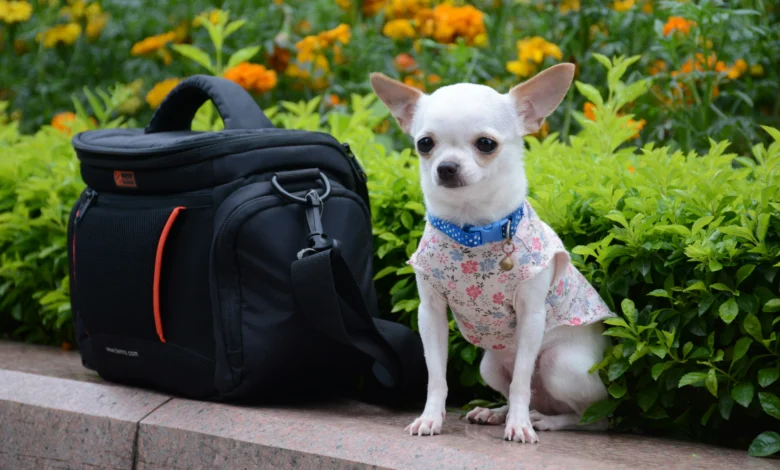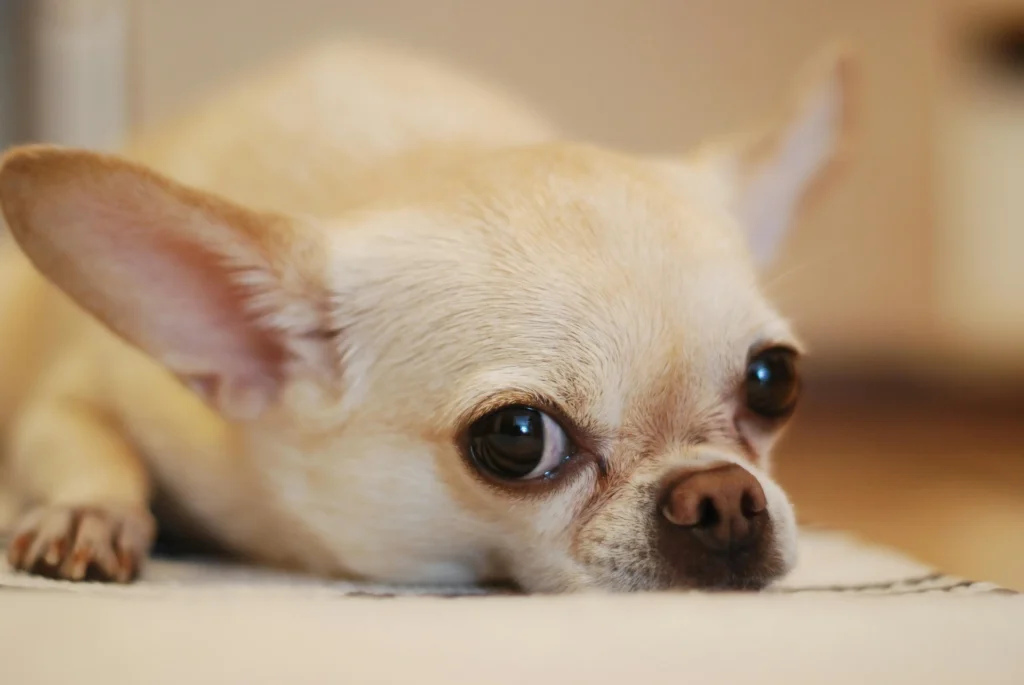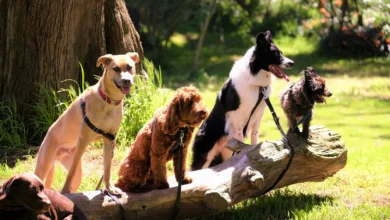12 Things You Need to Know Before Getting a Chihuahua

Imagine coming home to a tiny companion whose energy could light up a room. That’s life with a Chihuahua. These small but mighty dogs pack more personality into their petite frames than many larger breeds. But before you fall for those big, soulful eyes, there’s much to consider.
Owning one of these spirited pets isn’t just about cuddles and cute outfits. Their bold temperament demands patience, while their delicate size requires thoughtful care. Did you know some Chihuahuas weigh less than a bag of sugar? Yet they’ll guard your home like a 100-pound watchdog.
This guide walks you through everything from training quirks to health needs. You’ll learn how to socialize your new friend, create safe play spaces, and spot early signs of common breed-specific issues. Real stories from experienced owners reveal what truly works when raising these feisty little companions.
Understanding Chihuahua Personality and Lifestyle
Chihuahuas may be small, but their presence is anything but. These dogs combine loyal affection with a streak of stubbornness that keeps owners on their toes. Their bold nature means they’ll claim your lap one minute and challenge a larger dog the next.
Big Personality in a Small Package
Don’t let their diminutive size fool you. Studies show Chihuahuas score high in confidence compared to other toy breeds. They thrive on daily interaction, often shadowing their favorite person from room to room. Without proper training, this devotion can spiral into separation anxiety.
Mental stimulation proves crucial. Puzzle toys and short training sessions work wonders. A 2022 AKC report noted:
“Chihuahuas given consistent boundaries show 40% fewer behavioral issues than those without structure.”
Adaptability in Different Home Environments
These compact companions adjust well to apartments and houses. City dwellers appreciate their minimal exercise needs, while suburban owners enjoy their alertness during walks. The key lies in routine – erratic schedules stress their sensitive nature.
Consider these factors for harmony:
- Designate a safe space (like a cozy bed) for alone time
- Use positive reinforcement during socialization
- Schedule brief play sessions to manage energy levels
Their health depends on environmental awareness. Keep floors clear of small hazards, and maintain consistent vet visits to address breed-specific concerns early.
Getting a Chihuahua: Evaluating Your Readiness

Is your lifestyle ready for a dog that demands constant attention? These loyal pets thrive when integrated into daily routines, making honest self-assessment crucial before adoption. Their need for companionship often clashes with busy schedules, potentially leading to destructive behaviors if neglected.
Assessing Your Living Situation and Time Commitments
Compact size doesn’t equal low maintenance. While these spirited pets adapt well to apartments, their sensitive nature requires stable environments. Pet owners should ask:
- Can I puppy-proof my home against small hazards?
- Does my work schedule allow for midday check-ins?
- Am I prepared for 12-15 years of care?
Urban dwellers often succeed with proper planning. Create designated play areas and establish consistent feeding times to prevent anxiety.
Key Considerations and Expectations
First-time owners frequently underestimate this breed’s bold personality. A 2023 PDSA study revealed:
“68% of small dog behavioral issues stem from inconsistent training during puppyhood.”
Prepare for:
- Daily socialization exercises
- Child-friendly introductions if needed
- Budgeting for specialized veterinary care
Realistic expectations prevent frustration. These clingy companions prefer shadowing their people over independent play, requiring patience during adjustment periods.
Training and Socialization Essentials for Your New Dog
Training a pint-sized powerhouse requires smart strategies tailored to their unique traits. These spirited companions respond best to methods that respect their bold personalities while accommodating their delicate build. Start shaping behavior early – puppies learn fastest between 8-16 weeks.
Positive, Reward-Based Training Techniques
Treats and praise work wonders for building trust. The American Kennel Club emphasizes:
“Food-motivated breeds show 75% faster progress with reward systems versus punishment-based approaches.”
Keep sessions under 10 minutes to match short attention spans. Try these engaging games:
- Hide kibble in puzzle toys to stimulate natural hunting instincts
- Practice “touch” commands using their nose to target your palm
- Reward calm behavior during grooming routines
Early Socialization with People and Other Pets
Expose puppies to diverse experiences before 6 months. Introduce new faces gradually – have visitors offer treats while speaking softly. For multi-pet households:
- Supervise initial meetings with larger breeds
- Use baby gates for safe visual introductions
- Attend puppy classes for controlled playdates
The ASPCA notes:
“Properly socialized dogs are 60% less likely to develop fear-based aggression.”
Always end interactions before signs of stress appear, building positive associations over time.
Health and Exercise Guidelines for a Happy Chihuahua
Your tiny companion thrives when movement and wellness routines match their energetic spirit. These little dogs need tailored care to prevent common issues while staying active.
Daily Exercise Needs and Playtime
Plan 30 minutes of daily activity split into 10-minute sessions. Short walks paired with indoor fetch games work best for small dogs. Mental challenges matter too – hide treats in puzzle toys to engage their sharp minds.
Watch for overheating in summer and shivering in cold weather. Many little dogs benefit from sweaters during winter strolls. Always check pavement temperatures with your hand before walks.
Monitoring Health Issues and Preventive Care
Schedule bi-annual vet visits to catch health problems early. Chihuahuas often develop heart murmurs and knee issues. Keep an eye out for coughing or reluctance to jump – these signal urgent check-ups.
Make sure their diet includes omega-3s for joint health. Measure portions carefully since small dogs gain weight easily. A 2023 veterinary study found:
“Chihuahuas with consistent exercise routines show 30% fewer cardiac issues by age 7.”
Track subtle changes like reduced playfulness or appetite shifts. These little dogs hide discomfort well, so proactive monitoring prevents bigger health problems.
Grooming and Shedding: Keeping Your Chihuahua Looking Great

That glossy coat doesn’t maintain itself – regular care keeps your pet looking sharp while preventing skin issues. Though these small dog breeds shed less than others, their fine fur still finds its way onto furniture. A smart routine reduces loose hairs and strengthens your bond through gentle handling.
Coat Maintenance and Regular Brushing
Brushing frequency depends on coat type. Smooth-coated varieties need weekly sessions, while long-haired versions require 2-3 brushes weekly. Use a soft-bristle brush for sensitive skin or a slicker tool for tangled areas.
Veterinary grooming expert Dr. Ellen Torres advises:
“Consistent brushing distributes natural oils – it’s like a spa treatment that boosts coat health and spots early skin problems.”
| Coat Type | Recommended Brush | Frequency |
|---|---|---|
| Short/Smooth | Rubber curry brush | 1x week |
| Long/Flowing | Pin brush + comb | 3x week |
Managing Seasonal Shedding
Expect heavier fur loss during spring and fall. Combat loose hairs with daily 5-minute brush-outs using de-shedding tools. Keep lint rollers handy and vacuum high-traffic areas every other day.
Diet plays a role too. Omega-3 supplements reduce excessive shedding in 78% of cases, per a 2024 Pet Nutrition Journal study. Wipe coats with damp cloths between baths to trap loose hairs before they spread.
Stay ahead of problems by checking for bald patches or redness during grooming. These compact companions thrive when their care routine matches their unique needs – your efforts mean fewer vet visits and more cuddle time.
Integrating Your Chihuahua with Children and Other Pets
Building harmony between your petite companion and family members requires thoughtful strategies. These spirited dogs need clear boundaries and gradual introductions to feel secure in multi-pet or busy households.
Best Practices for Introducing Kids to Your Pet
Always supervise interactions with children under 10. Teach kids to approach calmly and avoid sudden movements. Reward gentle behavior with treats to create positive associations.
Follow these steps for stress-free bonding:
- Start with short, seated meetings (5 minutes max)
- Show children how to offer palm-up treats
- Use baby gates to create safe retreat spaces
A 2023 Animal Behavior study found:
“Dogs introduced to children before 6 months old show 50% fewer fear responses during play.”
Ensuring Smooth Interactions with Other Animals
Introduce new pets through scent first. Swap bedding between animals for 3 days before face-to-face meetings. Keep initial interactions brief and leashed.
Consider these factors for peaceful coexistence:
- Separate feeding areas to prevent resource guarding
- Use puzzle toys during joint exercise sessions
- Review pet insurance policies covering bite-related conditions
Rescue organizations often recommend:
“Adopting a second pet? Match energy levels – calm companions reduce stress for small breeds.”
Budget for unexpected costs like behavioral training if tensions arise. Consistent socialization over years helps maintain positive relationships between all household members.
Feeding, Diet, and Pet Insurance Considerations
Proper nutrition forms the foundation of your small companion’s vibrant energy and longevity. Breeders emphasize that daily meal planning directly impacts joint health and coat quality. A 2024 Canine Nutrition Study found:
“Dogs fed age-specific diets show 35% fewer digestive issues compared to one-size-fits-all approaches.”
Building Nutritional Foundations
Active pups need 25% more calories than seniors, but portion control remains critical. Split meals into three small servings daily to prevent blood sugar drops. High-quality kibble with lean protein should make up 90% of intake, while treats fill the remaining 10%.
| Age Group | Daily Calories | Meal Frequency | Treat Allowance |
|---|---|---|---|
| Puppy (0-1 year) | 200-275 | 4x | 20-27 calories |
| Adult (1-7 years) | 175-250 | 3x | 17-25 calories |
| Senior (7+ years) | 150-200 | 2x | 15-20 calories |
Strategic Fueling Through the Day
Consistent feeding times reduce anxiety and begging behaviors. Use lunch as a training opportunity – hide kibble in puzzle toys to engage their mind. Reputable breeders often suggest:
“Invest in pet insurance during puppyhood – 60% of claims for small breeds relate to dietary mishaps.”
Track weight monthly and adjust portions if your pup’s ribs become hard to feel. Pair smart nutrition with regular grooming checks to spot early health changes.
Related post: What I Wish I Knew Before Getting A Second Dog?
Conclusion
Caring for these spirited companions demands attention to detail in every minute of preparation. From their bold personalities to delicate health needs, success lies in understanding their unique requirements. Proper training, regular vet checks, and tailored nutrition form the foundation of a thriving pet-owner relationship.
Your efforts directly impact their well-being. Monitor your furry friend’s body language during play, and adjust routines at the first sign of stress. Consistent grooming and mental stimulation prevent behavioral issues while strengthening your bond.
Use this guide as a checklist before welcoming your new companion. Review exercise plans, diet specifics, and socialization strategies – every minute spent planning now saves hours of troubleshooting later. Prioritize pet-proofing your home and researching insurance options for unexpected health concerns.
Remember: their small size masks big needs. Commit to learning your pet’s body signals and maintaining routines that support lifelong health. With thoughtful preparation, you’ll create a joyful home where both of you can flourish.
FAQ
Are Chihuahuas suitable for apartment living?
Yes! Their small size makes them ideal for apartments or homes with limited space. They adapt well to indoor environments but still need daily mental stimulation and playtime.
Do Chihuahuas get along with children?
While loyal and affectionate, they can be fragile due to their tiny bodies. Supervision is crucial around young kids to prevent accidental injuries. Early socialization helps build positive interactions.
How much exercise do these dogs require?
Short walks and indoor play sessions (15–30 minutes daily) are sufficient. Overexertion isn’t necessary, but mental engagement through puzzle toys or training keeps them happy.
Are Chihuahuas prone to specific health conditions?
Yes. Dental issues, luxating patella, and hypoglycemia are common. Regular vet checkups and pet insurance can help manage costs for preventive care or chronic conditions.
Do they shed a lot?
Smooth-coated Chihuahuas shed moderately year-round, while long-haired varieties shed seasonally. Brushing 2–3 times weekly minimizes loose hair and keeps their coat healthy.
What training methods work best for this breed?
Reward-based techniques using treats or praise are effective. Consistency and patience are key, as their strong-willed personality may lead to stubbornness during sessions.
Can Chihuahuas coexist with other pets?
Early socialization helps reduce territorial behavior. Introduce new animals slowly and under supervision. Many thrive in multi-pet households when boundaries are respected.
How often should I feed my Chihuahua?
Small, frequent meals (3–4 times daily) prevent hypoglycemia. High-quality kibble formulated for small breeds supports their fast metabolism. Avoid overfeeding to prevent obesity.
Is pet insurance worth it for this breed?
Given their predisposition to health issues, insurance like Healthy Paws or Nationwide can offset unexpected vet bills. Compare plans to find coverage for hereditary conditions.
Do they require professional grooming?
Basic at-home care (brushing, nail trims, and ear cleaning) is usually enough. Long-haired types may need occasional trims, but frequent baths aren’t necessary unless they get dirty.


